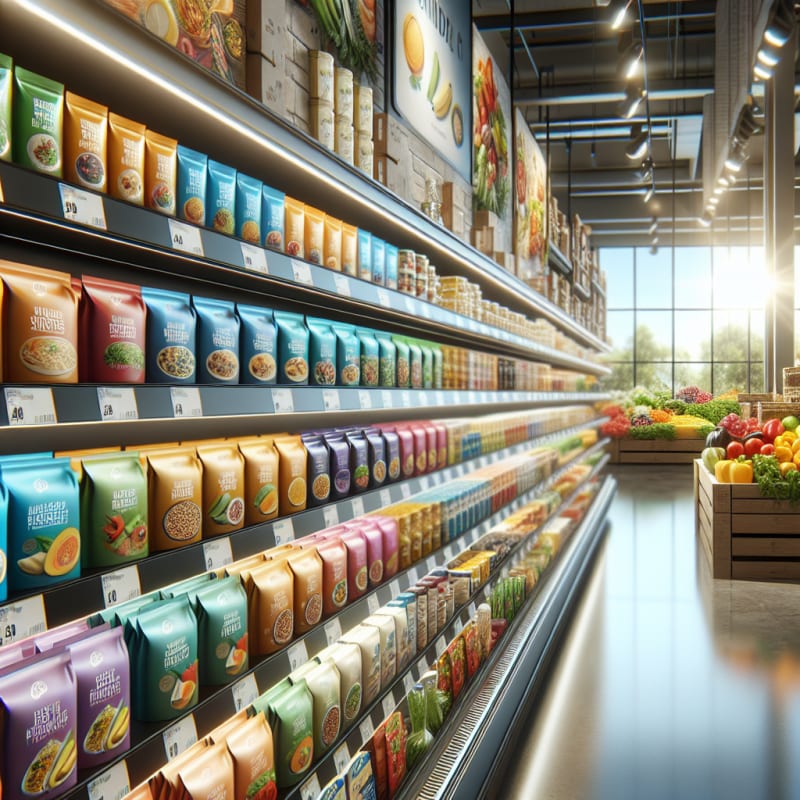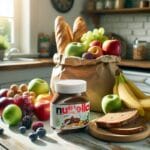How To Scan Food Labels For E Numbers: A Complete Guide for 2025
Category: Generic Scanners | Focus Keyword: how to scan food labels for e numbers
From supermarkets in Paris to grocery aisles in New York, understanding what’s inside your food is more important than ever. For consumers with dietary restrictions, allergies, or a desire to eat clean, the ability to scan food labels for E numbers—those cryptic codes for food additives—has become an essential skill. This guide explains how to scan food labels for E numbers, why it matters, and which tools—including the Food Scan Genius app—can help you make safer, smarter choices.
What Are E Numbers and Why Should You Care?
E numbers are codes for substances used as food additives within the European Union and other regions. Each E number corresponds to a specific additive, such as preservatives, colorants, emulsifiers, or stabilizers. While some are harmless or even beneficial, others are controversial or restricted for certain populations, especially children or people with sensitivities.[1]
- E100–E199: Colors
- E200–E299: Preservatives
- E300–E399: Antioxidants, acidity regulators
- E400–E499: Thickeners, stabilizers, emulsifiers
- E500–E599: Acidity regulators, anti-caking agents
- E900–E999: Sweeteners, glazing agents, gases
For example, E621 is monosodium glutamate (MSG), a flavor enhancer that some people try to avoid due to potential sensitivities.[2]
How to Scan Food Labels for E Numbers: Step-by-Step
- Locate the Ingredients List: On packaged foods, look for the ingredients panel, usually on the back or side.
- Identify E Numbers: E numbers are typically listed as “E” followed by three or four digits (e.g., E330 for citric acid).
- Check for Additive Names: Sometimes, additives are listed by their chemical names instead of E numbers, especially in the US.
- Use a Scanner App: Apps like Food Scan Genius let you scan the barcode or ingredient list and instantly flag E numbers and their safety profiles.
- Cross-Reference with Reliable Sources: Verify the safety or restrictions of specific E numbers using trusted databases (FDA, EFSA).
Here’s a comparison of how E numbers are displayed in different regions:
| Region | Labeling Example | Regulatory Authority |
|---|---|---|
| United States | “Sodium benzoate” (no E number) | FDA |
| European Union | “E211” (sodium benzoate) | EFSA |
| Australia | “211” (without ‘E’ prefix) | FSANZ |
Tip: If you’re traveling or shopping for imported foods, knowing both the E number and the additive name is crucial.
Why Scanning for E Numbers Matters: Health and Safety
Many E numbers are considered safe in regulated amounts. However, some additives are associated with allergic reactions, hyperactivity in children, or other health concerns.[3] For example:
- E102 (Tartrazine): Linked to hyperactivity in children; requires warning labels in the EU.
- E220 (Sulphur dioxide): Can trigger asthma attacks in sensitive individuals.
- E951 (Aspartame): Not recommended for people with phenylketonuria (PKU).
According to a 2023 New York Times report, the US and EU differ significantly in their approach to food additive regulation, with the EU often taking a more precautionary stance.
Comparing US and EU Food Labeling Laws
United States: FDA Oversight
The FDA requires all food additives to be listed by their common or usual name, not by E number. This means US consumers must recognize chemical names, which can be challenging.
European Union: EFSA and E Numbers
In the EU, the European Food Safety Authority (EFSA) assigns E numbers to all approved food additives. Products must display these codes, making it easier to identify and research additives.
Key Differences Table
| Aspect | United States | European Union |
|---|---|---|
| Labeling | Chemical names only | E numbers and/or names |
| Regulatory Body | FDA | EFSA |
| Precautionary Principle | Less strict | More strict |
| Warning Labels | Rare | Common for certain E numbers |
Recent coverage by BBC News highlights growing consumer demand for transparency in food labeling, especially regarding additives.
How Food Scan Genius Makes Scanning E Numbers Effortless
For people with food allergies, intolerances, or dietary preferences (vegan, halal, kosher), quickly identifying E numbers is crucial. The Food Scan Genius app (scangeni.us) empowers users to:
- Scan barcodes or ingredient lists instantly using your phone camera
- Highlight E numbers and provide clear explanations of each additive
- Filter by dietary preferences (e.g., gluten-free, vegan, nut-free)
- Receive alerts about additives flagged by FDA or EFSA as risky
- Compare international products for travelers or expats
“As someone with a sulfite allergy, Food Scan Genius has been a lifesaver. I just scan the label, and it instantly tells me if there’s anything I need to avoid. I highly recommend it to anyone who wants to shop smarter and safer.”
— Maria L., Berlin
Download Food Scan Genius to simplify your grocery shopping and protect your health.
Frequently Asked Questions: Scanning Food Labels for E Numbers
- Q: Can I scan food labels for E numbers with my smartphone?
- A: Yes. Apps like Food Scan Genius let you scan barcodes or ingredient lists and instantly identify E numbers and their safety status.
- Q: Are all E numbers harmful?
- A: No. Many E numbers are safe and even necessary (like vitamin C, E300). However, some may cause reactions in sensitive individuals. Always check with reliable sources or use a scanner app for guidance.[1]
- Q: How do US and EU labeling laws differ?
- A: The US lists additives by chemical name (FDA), while the EU uses E numbers (EFSA). This affects how easily consumers can identify and research additives.
- Q: What should I do if I find a suspicious E number?
- A: Consult trusted sources like the FDA, EFSA, or use Food Scan Genius to get detailed information and health warnings.
Conclusion: Make Informed Choices with Food Scan Genius
Whether you’re a parent, a traveler, or someone with food sensitivities, understanding how to scan food labels for E numbers is vital for your health and peace of mind. With global differences in labeling laws and increasing complexity in food additives, tools like Food Scan Genius can bridge the gap—making it easy to decode ingredients wherever you shop.
Take control of your food choices: Download Food Scan Genius, scan your next grocery item, and shop with confidence.





